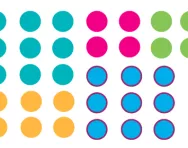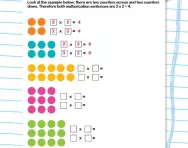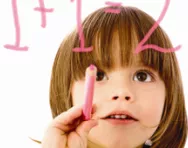Important update from TheSchoolRun
For the past 13 years, TheSchoolRun has been run by a small team of mums working from home, dedicated to providing quality educational resources to primary school parents. Unfortunately, rising supplier costs and falling revenue have made it impossible for us to continue operating, and we’ve had to make the difficult decision to close. The good news: We’ve arranged for another educational provider to take over many of our resources. These will be hosted on a new portal, where the content will be updated and expanded to support your child’s learning.
What this means for subscribers:
- Your subscription is still active, and for now, you can keep using the website as normal — just log in with your usual details to access all our articles and resources*.
- In a few months, all resources will move to the new portal. You’ll continue to have access there until your subscription ends. We’ll send you full details nearer the time.
- As a thank you for your support, we’ll also be sending you 16 primary school eBooks (worth £108.84) to download and keep.
A few changes to be aware of:
- The Learning Journey weekly email has ended, but your child’s plan will still be updated on your dashboard each Monday. Just log in to see the recommended worksheets.
- The 11+ weekly emails have now ended. We sent you all the remaining emails in the series at the end of March — please check your inbox (and spam folder) if you haven’t seen them. You can also follow the full programme here: 11+ Learning Journey.
If you have any questions, please contact us at [email protected]. Thank you for being part of our journey it’s been a privilege to support your family’s learning.
*If you need to reset your password, it will still work as usual. Please check your spam folder if the reset email doesn’t appear in your inbox.
What are arrays?

What are arrays?
Arrays are a pictorial representation to help children understand times tables. For example, a child may be given the following word problem:
I have 3 bags. There are 5 pennies in each bag. How many pennies do I have altogether?
A teacher might show the children that the first bag has five pennies and draw the five pennies in a line. Then they would explain that the second bag also has five pennies, and draw a second line. They would continue until they had drawn 3 lines of 5 pennies like this:

The teacher might then explain that rather than counting all the pennies individually, you could work out the answer by counting each line in 5s. The teacher could then point to each line and count 5, 10, 15 to show the children that there were 15 pennies in all.
Teachers in Key Stage 1 will teach children how to count in 2s, 5s and 10s and make sure they are very confident in this, before going on to show them how to work out times table problems like this one using arrays.
This is because children need to be able to count up in steps of different numbers before they can use arrays to help them.
In Year 3, children are expected to learn their 3, 4 and 8 times tables. Teachers may still use arrays for children struggling with their times tables at this stage. Many children find a pictorial representation helps them enormously with working out a worded problem.
Arrays: how they help children understand multiplication and division
Arrays are useful for showing children the relationship between multiplication and division (called 'the inverse'). If you showed a child the above diagram, you could explain to them that it shows 3 x 5 or 'three lots of five', but it also shows how 15 can be divided into 3 equal groups, or 5 equal groups, therefore it demonstrates the following four number sentences:
It is important that when children learn their times tables, they also learn the division facts associated with them, so they are not just learning 6 x 5 = 30, but 30 ÷ 5 = 6. Children need to have quick recall of multiplication facts and division facts and arrays can help enormously in the first stages of understanding the relationship between multiplication and division. These are called Fact Families and teach children how if they know one number sentence, they can use the inverse to learn three other related facts.








